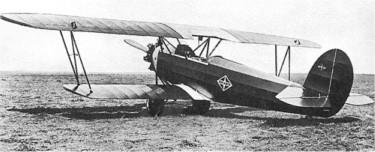| Type |
2-seat trainer |
| Engine |
1 Siemens Sh 12 |
| Dimensions |
Length 7.50 m, height 2.75 m, span 8.5/11.5 m, wingarea 27.3 m2 |
| Weights |
Empty 600 kg, load 225 kg, fuel 45 kg, flying weight 825 kg, wing loading 30.0 kg/m2 , fuel 90 l |
| Performance |
Max. speed 128 km/h, range 250 km, service ceiling 3700 m, landing speed 50 km/h, required runway for take off 55 m, for landing 37 m initial climb rate : 1.60 m/s, to 1000 m 10,0 min., to 2000 22,5 min. |
| Type |
Werk.Nr |
Registration |
History |
|
39 |
|
First a Siemens Sh 11 . Sold to Turkey |
The S III was created as a result of a rush order from Turkey. Since the pattern was to be completed in just eight days, no design documents were made by him. Instead, the designer Walter Rethel gave his construction specifications orally, whereby he was largely based on the SI created in 1925. The fuselage structure was largely adopted, the chassis and the statics of the supporting structure were slightly modified. An Sh 11 with 96 hp take-off power was used as the engine. The construction of the aircraft with the serial number 39 was accomplished in continuous day and night work and could be completed within the required period. Subsequent transport to Turkey was by land. There, the S III was flown to the clients by Werner Junck, with the engine power being assessed as too weak. The Sh 11 was therefore replaced by a Sh 12 with 125 hp. It is not known whether and how the S III continued to be used in Turkey.
The S III is a self-supporting, unbraced one-and-a-half-decker with a staggered structure in a mixed construction.
The fuselage was essentially similar to that of the S I and consisted of a welded tubular steel frame with a rectangular cross-section, which was planked with sheet metal in the area of the engine and covered with fabric in the rest. The back of the fuselage behind the cabins was covered with a removable, semi-circular shell that provided easy access to the control mechanisms. The engine mounting was designed to swivel downwards at the front so that the drive could be changed by just two people without the aid of a block and tackle. There was a firewall between the engine and the forward crew cabin. The S III was equipped with dual controls that could be disabled mid-flight by the flight instructor for the student's cabin if necessary.
The wings consisted of wooden frames with two box spars, the planking in between of which was made of plywood. The remaining surfaces were covered with fabric. While the upper wing was continuous, the lower wing consisted of two parts. The structure was connected to each other as well as to the fuselage by N-struts. The two fuel tanks designed as drop tanks with a capacity of 45 l each were located in the upper wing. Long and narrow ailerons were used only in the upper wing.
The empennage supported by I-stems towards the fuselage consisted of a fabric-covered tubular steel frame. The rudders were not balanced.
The S III had a rigid main landing gear with rubber cable suspension, the wheels of which were connected to one another by an axle. There was a skid at the stern.

